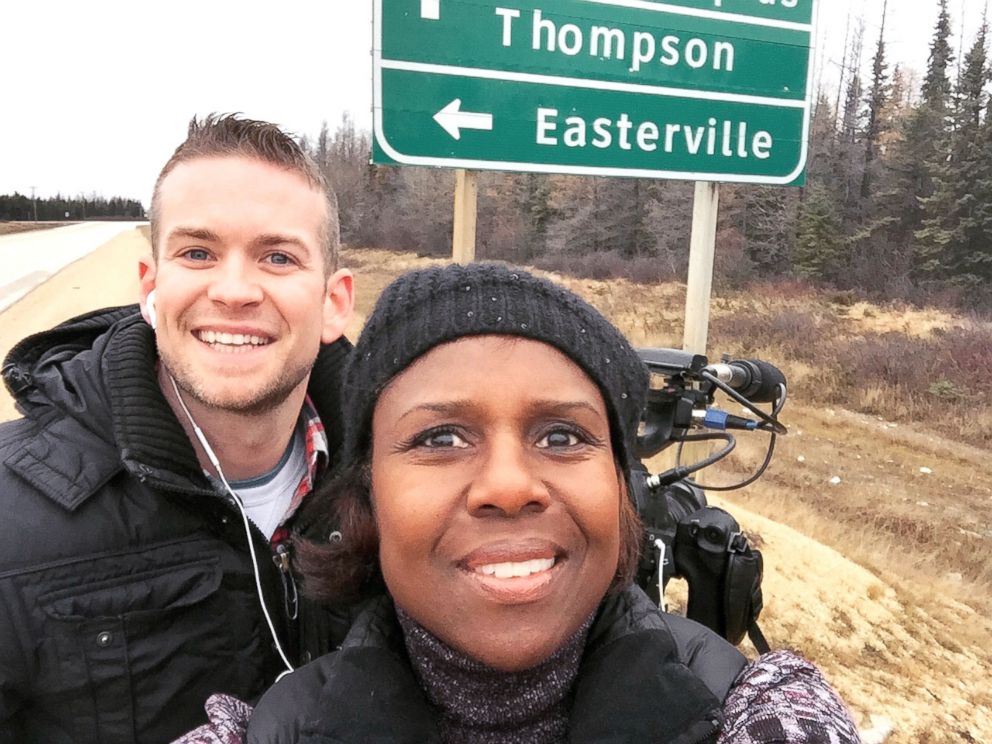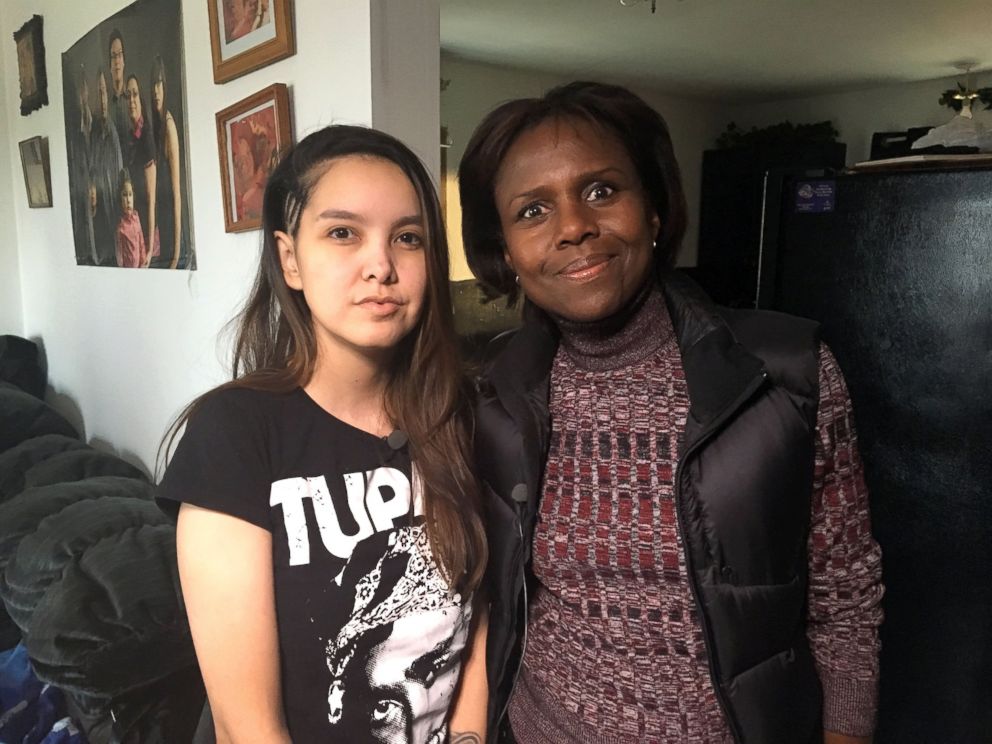Reporter's notebook: The hunt for an elusive catfish who nearly destroyed NBA player and a young social media star's lives
ABC News' Deborah Roberts recalls her journey to finding Shelly Cartier.
— -- As I stepped outside at Manitoba’s James Armstrong Richardson airport last November, I shivered in the cold. Winter comes early to Winnipeg (or “Winterpeg” as the locals call it), a city best known as the launching point for tourists looking to catch a sight of polar bears in Churchill, near the Arctic Circle. But I was in search of something far more elusive than a polar bear -- I was hunting for Shelly Chartier, the “Ghost of Easterville” - a woman who had engineered a stunningly complex catfishing scheme ensnaring an NBA superstar and a social media princess.
The next morning, I was up before dawn to begin my five-hour drive north toward Easterville, a tiny First Nation village nestled on the southern edge of pristine Cedar Lake. With cups of coffee, bottles of water, and a sense of adventure, my producer, Jonathan Balthaser and I departed into the Canadian early morning chill.

Almost immediately the urban landscape of Winnipeg gave way to vast swaths of frozen farmland punctuated only by lonely gas stations and truck stops. But before we could settle in for the 300-mile drive, there were a couple of dramatic moments.First, the small GoPro camera we attached to the hood of the car apparently couldn’t sustain the frigid air. As I made my way through the thick morning fog, sharing some small story about our long journey, suddenly, the windshield was struck by a flying object. I screamed. Jonathan, rattled as well, suggested I pull over. We were both surprised that the camera had gone flying over the roof of the car. Jonathan insisted on sprinting across the two-lane highway to look for it. To my surprise, less than 10 minutes later, he returned with the camera and the mount dirty and beaten, but intact. Whew! What more could happen, right?
Well, what about a Canadian state trooper parked along Highway 6 just a few kilometers ahead of us. To my dismay, blue lights were soon flashing in the rearview mirror. I was the only car on the road at that moment, so there wasn’t much guessing about who was being pulled over. The signs posted in kilometers caught me off guard. Somehow I didn’t realize that my 128-kilometer speed translated into 80 mph. Oops! But fortunately, Canadian police can be sympathetic toward a confused New Yorker. He let me off with a stern but friendly warning. We decided it was now time for Jonathan to drive.
Soon, the farmland gradually shifted to an enormous, hardy forest. On we drove, and our cellphone service ceased. It felt like we were driving back in time: This terrain is ruled by nature, and locals warned us never to let our gas fall below half a tank, because the land out here is so remote, the closest help can be hours away.
Finally, after over five hours of driving, we arrived in Easterville, home to the Chemawawin Cree Nation, and to Chartier. As I mic’ed up and prepared to go meet her, my producers went in to greet her and set up. But minutes later, they walked out of the tiny house looking worried and like they had seen, well, a ghost. Chartier, 32, was getting cold feet. She was refusing to do the interview even though she had already agreed to sit down with me. After some further discussion, Chartier agreed to at least say hello. When I finally came face to face with her, I was shocked to meet a small 90-pound woman who looked every bit a teenager and had the shy affect of someone years younger.

Eventually, Chartier dropped her guard and led me to her kitchen table to talk. Sensing the possibility of the moment, my producers began rolling their small hand-held cameras, all of us unaware of what would happen next.
Chartier began to share the story of her incredible deceptions on camera for the first time in her life. She revealed a sad life of deprivation and loneliness. She told us she was bullied in school and dropped out in sixth grade. Instead of books and homework, her life revolved around the care of her bedridden mother, Delia. She became anxious, agoraphobic and housebound.
Isolated from the world, Chartier turned to the internet for amusement. She would spend her hours trolling Facebook and following celebrities online. One night, on a whim, she pretended to be Chris “The Birdman” Andersen, and reached out to Paris Dunn, a fan who had written on his Facebook page. She said she was surprised by how easy it was to impersonate another person. Thus began a complicated puppeteering act that would begin with Andersen and Dunn meeting for a weekend tryst and end with police raiding Andersen’s house after explicit nude photos of Dunn were posted online. Birdman was fired from the Nuggets. He was labeled a pedophile by some. The Ghost of Easterville had struck.
While I talked with her, Chartier was by turns evasive and forthcoming; sometimes admitting wrongdoings, but also laying blame on other parties. “I’m stupid,” she told me, when I asked her why she did it. But she also chastised Dunn for failing to fact check and make sure she was really talking with Andersen, who was later cleared by police. Chartier was sentenced to 18 months in prison, but she says her time there has reformed her and even socialized her. She can now leave the house without fear and look you in the eye, she said.
After our interview, I said goodbye to Chartier and her new husband, Rob Marku, whom she also met online. As I headed back to Winnipeg through the dark Manitoba night, I wondered if Chartier would keep her word and stop meddling in other people’s lives online. We will have to wait and see what happens with this catfish, but in the meantime, the Ghost of Easterville is haunted herself – by authorities in the United States. Christopher Gallo, the district attorney in Colorado told ABC News that they are actively pursuing extradition proceedings with hopes of pressing new charges against Chartier.




